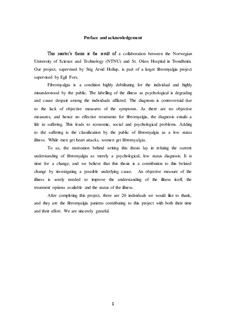| dc.description.abstract | Fibromyalgia is a highly disabling condition that causes widespread muscle pain and fatigue. Core symptoms are often accompanied by poor sleep, memory deficits and depressive symptoms. The unknown aetiology of fibromyalgia makes it difficult to diagnose and give proper treatment. The extensive overlap with other syndromes characterized as unexplained points toward a possible common underlying mechanism, which has been suggested to be central sensitization. A possible sensitization of the central nervous system should be reflected in the neural activity of the brain. In this study, this was assessed with qEEG and ERPs in a VCPT. The aim of the study was twofold. The first objective was to investigate whether fibromyalgia patients could be differentiated from chronic pain and chronic fatigue patients based on ERPs. The second objective of this study was investigating whether Slow Cortical Potentials neurofeedback is effective in normalizing ERPs in fibromyalgia patients and whether it can lead to symptom relief. A MANOVA analysis showed significant differences between the three patient groups, and a discriminant analysis revealed two functions separating the groups, in combination. The two functions may represent two core symptoms of the illnesses; pain and fatigue. Multiple t-test revealed three significant improvements of ERPs due to neurofeedback. Limitations and interpretations of results are discussed. | nb_NO |
